To really experience Rome, you have to walk it. The city’s maze-like streets, once designed to confuse invaders, now invite you to wander and discover something new at every turn. Whether you’re joining a Rome Walking Tour or exploring solo, here are five essential tips for visiting Rome to make the most of your time in the Eternal City.

Tips for visiting Rome
1. Get Lost and (Roam) the Streets of Rome
One of the best tips for visiting Rome is to let the city lead the way. Wander through the best neighborhoods: Trastevere, Monti, and the Jewish Ghetto, and discover Rome’s blend of history and modern life.
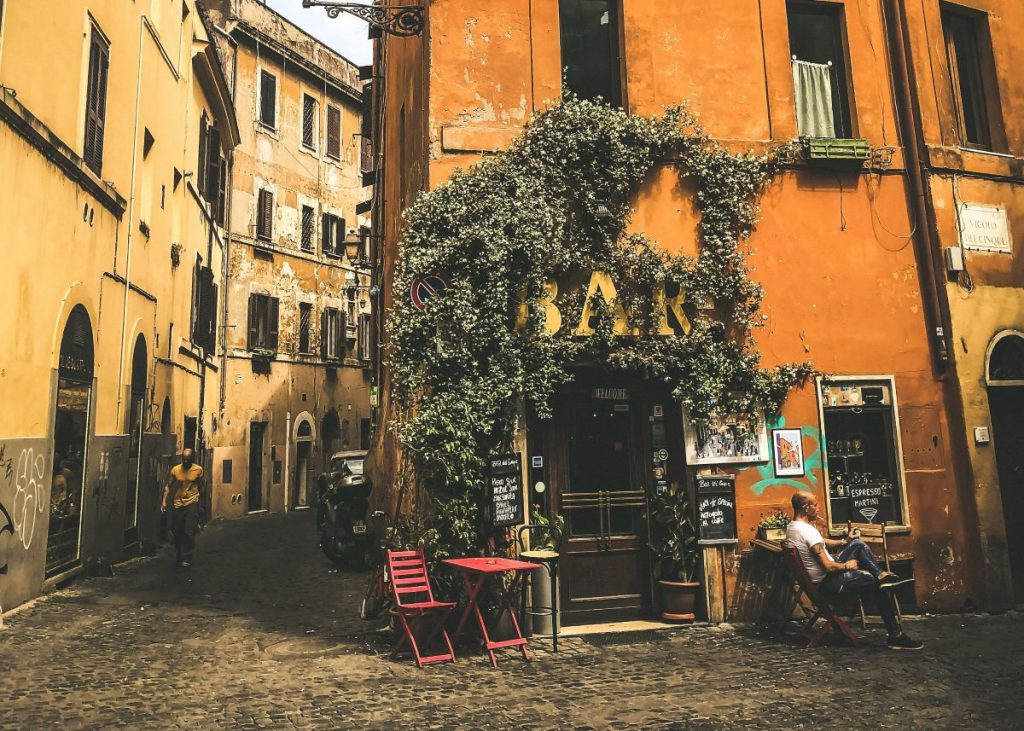
Let yourself roam and discover as you go. Some of the best areas to explore include:
- Trastevere – A maze of ivy-covered lanes with worn cobblestones and 12th-century mosaics. Lively spots include Piazza di Santa Maria and Piazza Trilussa
- Monti – A bohemian quarter filled with artisan shops, wine bars, and charming side streets
- Ghetto di Roma – The former Jewish quarter, rich with historic sites such as the ancient marketplace of Portico d’Ottavia
- Centro Storico – The heart of historic Rome. This where tiny alleys connect iconic plazas, like Campo de’ Fiori, Piazza Farnese, and Piazza Navona
- L’Aventino – One of the Eternal City’s seven hills. This acts as a peaceful hilly escape with tree-lined streets and sweeping views
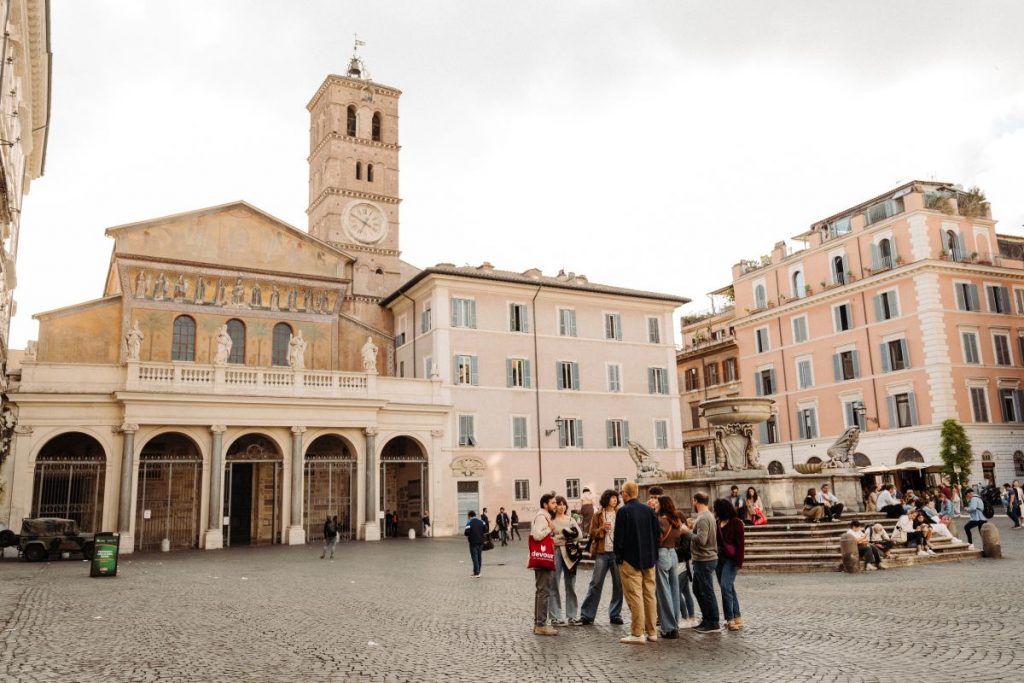
Insider Tip: Stroll down Via Giulia, which is lined with palaces and antique shops. It offers a glimpse of Renaissance Rome just steps from il Tevere river.
2. Descend into the City (Beneath the City)
Few visitors realize that beneath modern Rome lies another world entirely; head underground and go back in time.
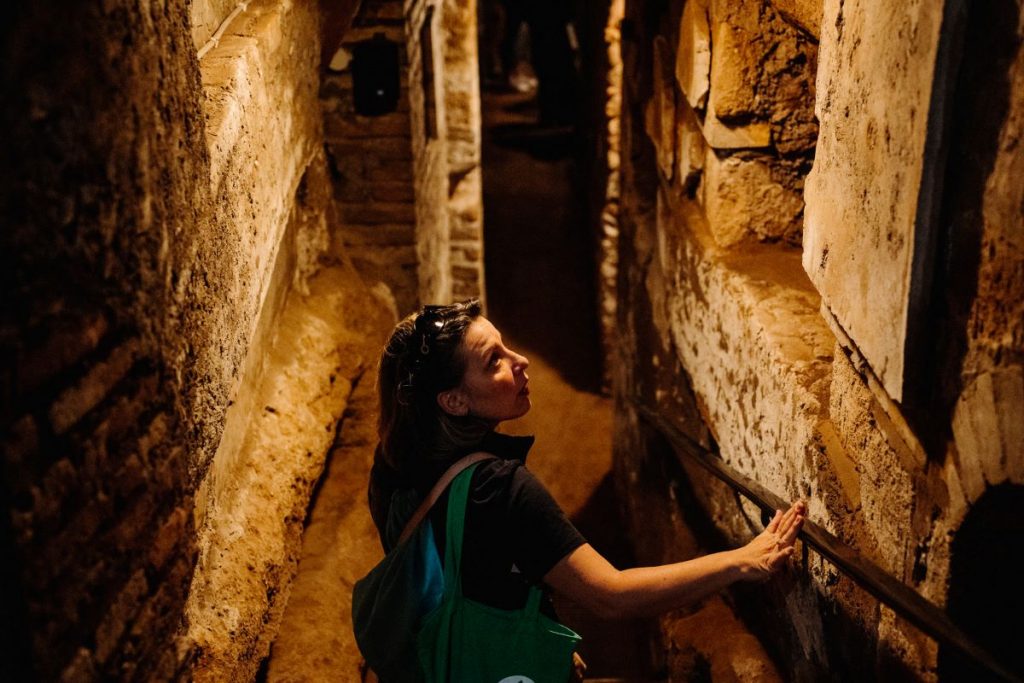
Under the Basilica di San Clemente, you’ll find everything from a 4th-century church to a 1st-century Mithraic temple. In the Catacombs, 150km of tunnels contain Christian, Jewish and pagan burial sites. And in the Domus Aurea, Nero’s extravagant designs remain visible today.
One of the most striking spots is Vicus Caprarius, The Water City, hidden just steps from the Trevi Fountain. Here, ancient homes and aqueducts still carry water from the same source that feeds the fountain above. On our Rome Walking Tour, visitors can explore this underground labyrinth and see how Rome’s past continues to shape its present.

3. Indulge in its Street Food Scene
Wondering what to eat in Rome? Some of the city’s best flavors are found on the go. Try pizza al taglio, supplì, and trapizzino, local favorites that tell the story of Roman cuisine in every bite.

- Pizza al taglio – A traditional Roman style of pizza. Baked in large rectangular trays, cut to order, and perfect for eating on the go. One of our go-to spots is Forno Campo Di Fiori.
- Supplì – A typical Roman rice croquette. Elongated in shape and often filled with mozzarella and ragù. Try them at Suppli Roma.
- Trapizzino – A relatively new Roman invention by Stefano Callegari. Trapizzino consists of a soft, triangular pocket of pizza dough stuffed with traditional stews like pollo alla cacciatora or trippa. Enjoy it at Callegari’s original shop.
- Gelato – And of course, you can’t leave Rome without a gelato (or two).

Insider Tip: On our Rome Walking Tour, your expert local guide will take you to try gelato at a tiny family-run spot that locals swear by. This is the real deal, not the mass-produced, preservative kind, and this is a perk to joining the tour, as you get insider information on the best places to taste the local cuisine. This way, you can taste the best of Rome’s history one bite at a time.
4. Savor the Eternal City
Rome rewards those who linger. Sit down in Piazza Navona and watch the street performers at work. Or step into Chiesa di Sant’Ignazio di Loyola and look up at its illusionistic ceiling that seems to stretch on forever.
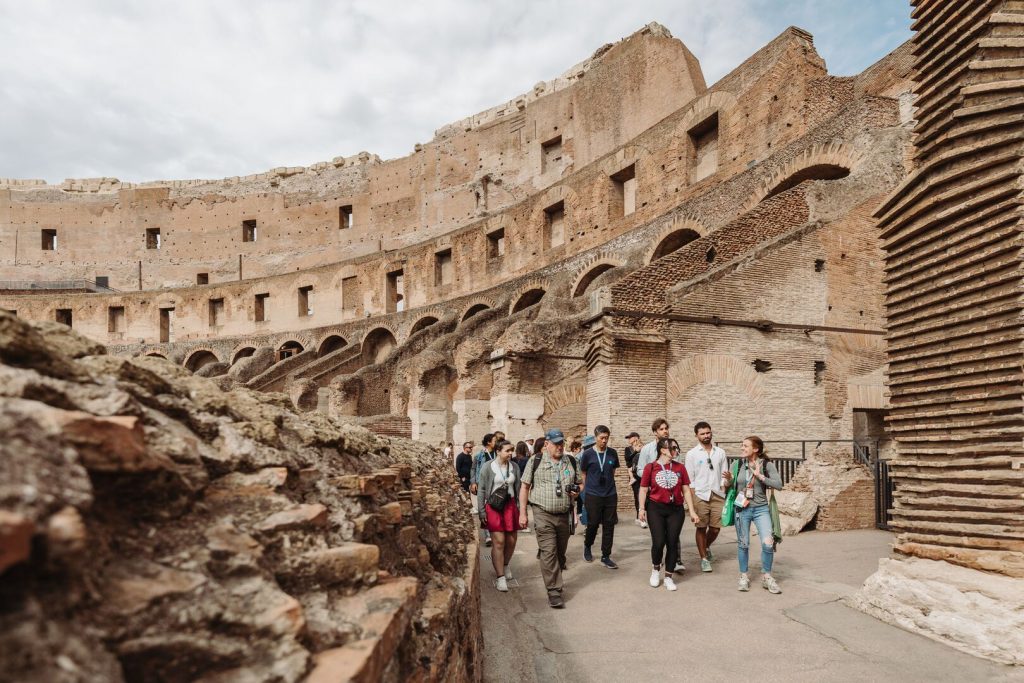
Another essential tip for visiting Rome is to take your time and don’t rush these must-see’s:
- The Colosseum: Rome’s most famous arena, once the stage for the gladiators, invites you to step inside and soak up the atmosphere of its ancient crowds.
- The Pantheon: Built around 25-27 BC, this well-preserved temple impresses with its soaring dome and oculus, inviting visitors to take it all in.
- Piazza Navona: Once Domitian’s stadium, it’s now one of Rome’s most theatrical squares, alive with artists, fountains, and café terraces.
- Campo de’ Fiori and Trastevere: Vibrant markets, trattorias, and curvy streets make these areas ideal for strolling, sampling, and soaking up daily Roman life.
- Scalinata di Trinità dei Monti (also known as “the Spanish Steps”): Built in the 18th century to connect the Piazza di Spagna with the Trinità dei Monti church, you can climb it for sweeping city views, or simply sit and people watch.
And when you’re ready to slow down on a grander scale, spend time at the Vatican, a place where art, faith, and history intertwine.
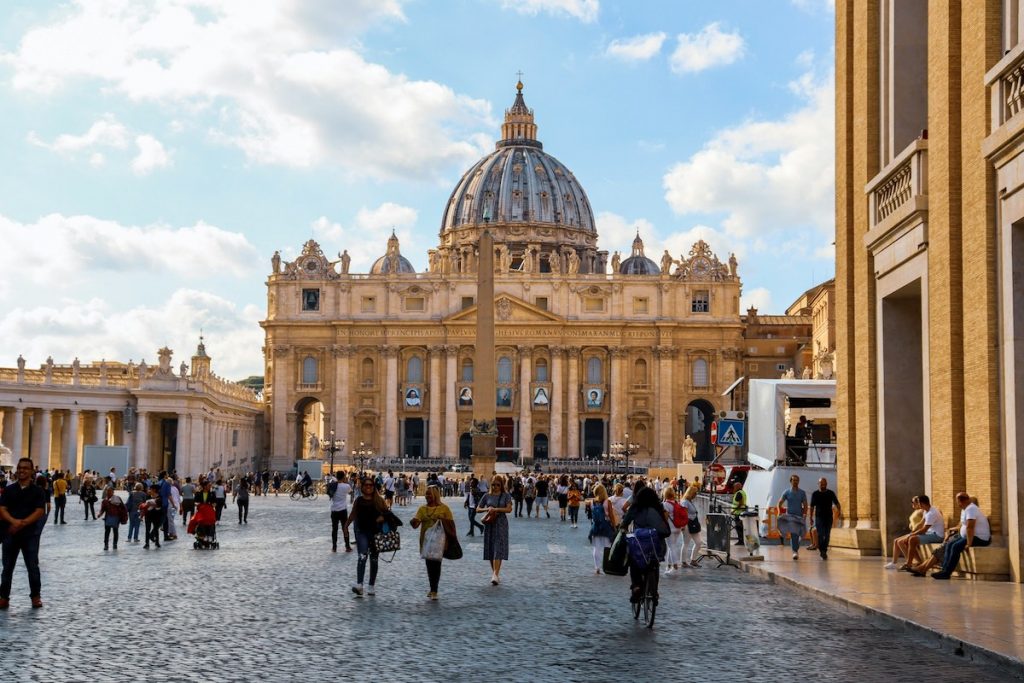
Insider Tip: On our Complete Vatican Tour, you’ll get to move through it all, without the rush, with one of our expert guides. You’ll uncover the stories behind the masterpieces, traverse through secret corners and chapels, and have the space to truly soak everything in.
5. See Rome From Above
The final of the top 5 tips for visiting Rome is… to fully appreciate Rome, you have to look at it from every angle, and that includes from above. Climb to one of the city’s viewpoints and watch how domes, rooftops, and ruins all layer together.
One of the loveliest vantage points is from the Spanish Steps (which you’ll reach at the end of our Rome Walking Tour). From here, it’s an easy, scenic stroll up to Villa Borghese. This is where the Pincio Terrace offers a wide, panoramic view of the city, the perfect way to end your walk, or your day, in Rome.
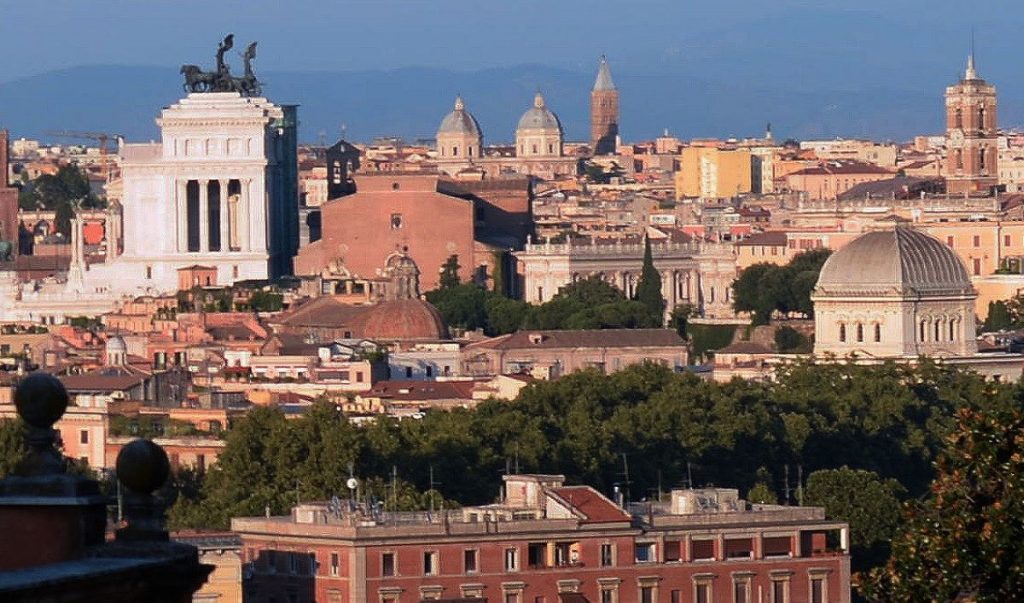
Insider Tip: Another spot to check out if you’re a sunset lover is the Gianicolo hill in the late afternoon to catch the golden light – it’s one of the city’s most beautiful lookouts.
Ready to Explore the Eternal City?
There’s no single way to see Rome, but walking it with a local expert comes close. Whether you’re exploring hidden alleys, sampling street food, or taking in the sweeping views from the Spanish Steps, our Rome Walking Tour helps you connect the dots between the city’s layers of history and daily life.
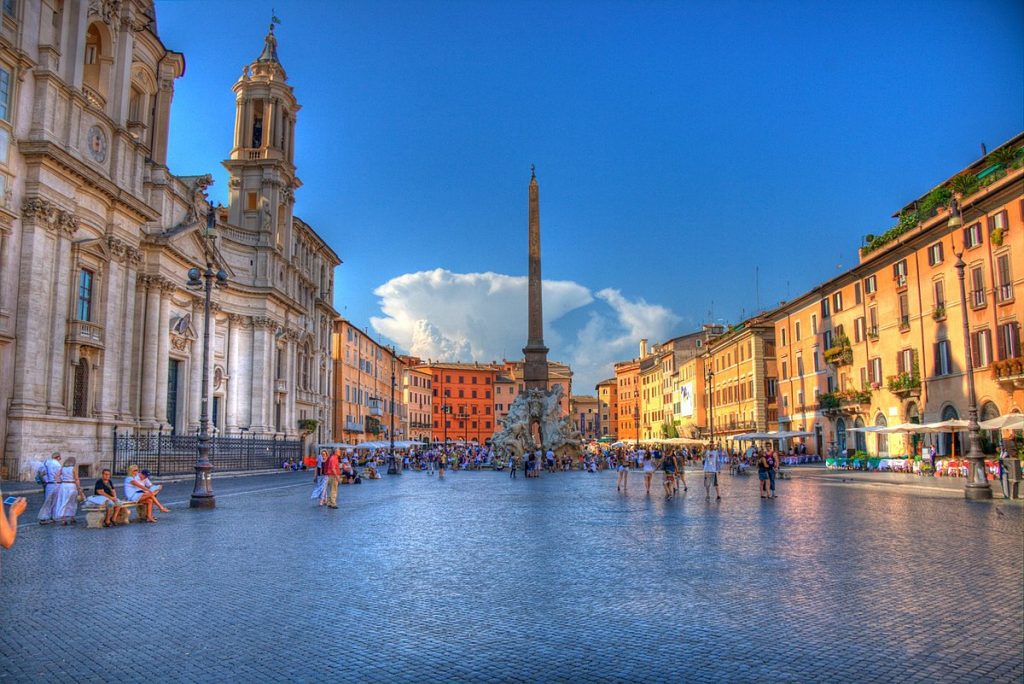
FAQ´s – Tips for Visiting Rome
When is the best time to visit Rome?
Spring (April-June) and fall (September-October) are ideal for walking; the weather is mild, crowds are lighter, and the city’s golden light makes every stroll feel cinematic.
Is Rome walkable?
Very. Most major sights, from Piazza Navona to the Colosseum, are within walking distance of each other. Just make sure to bring comfortable shoes!
Do I need to book attractions in advance?
Yes, especially for the Colosseum, the Vatican Museums, and the Borghese Gallery. Booking ahead, or joining a Walks tour that includes skip-the-line access, saves you hours of waiting.
What should I wear when visiting churches?
Dress modestly: cover shoulders and knees, especially at the Vatican or major basilicas. A scarf or shawl can come in handy.

There’s no single way to see Rome, but walking it with a local expert comes close. With Take Walks’ Rome Walking Tour, you’ll experience the Eternal City through its stories, flavors, and views—one step at a time.
